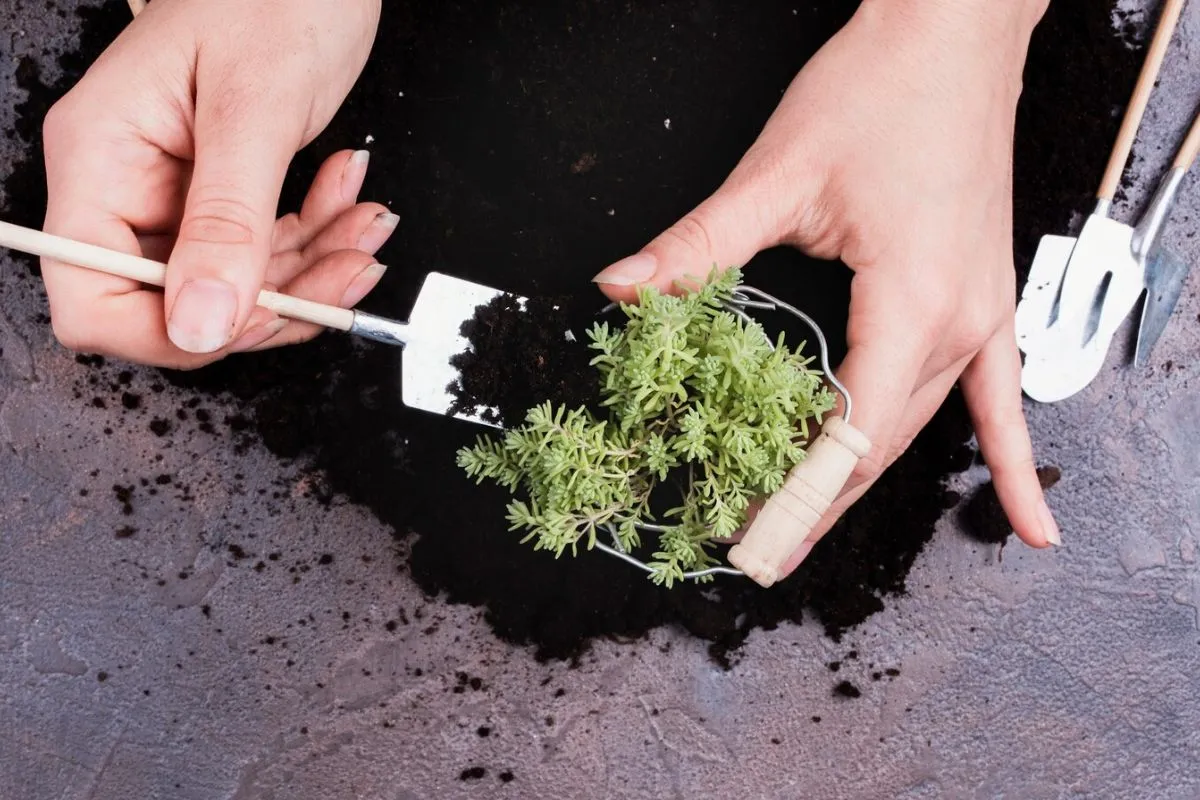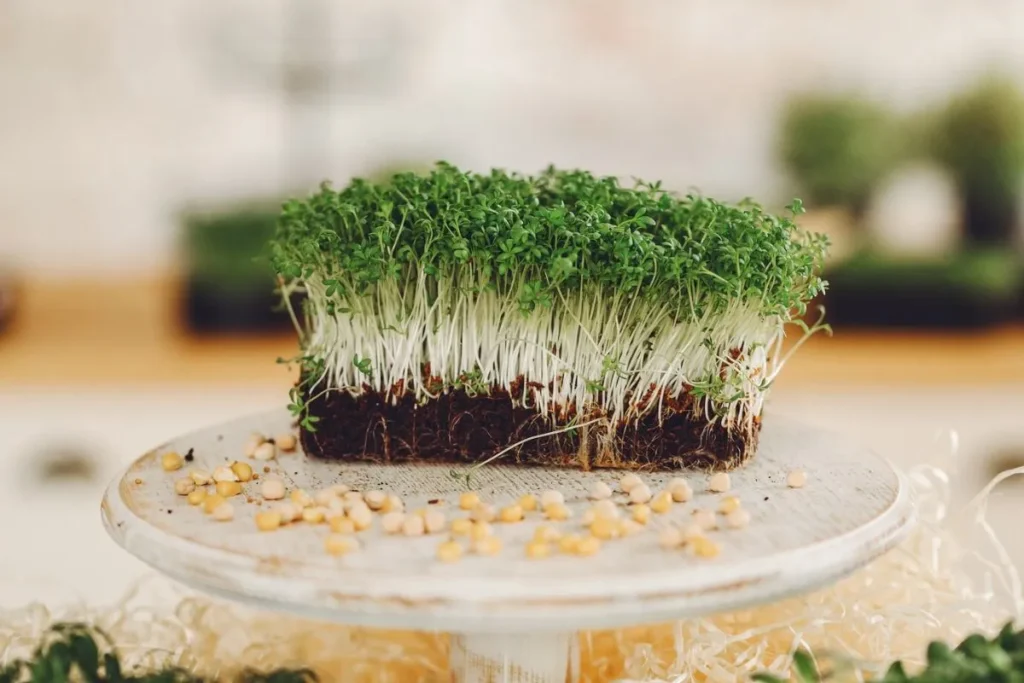Using Organic Soil Mixes for Microgreens is a trending topic among urban gardeners. Microgreens are nutrient-packed young vegetables. Organic cultivation offers numerous benefits to them.
Organic soil mixes boost the health and yield of microgreens. These mixes are free from harmful chemicals and pesticides. Hence, they offer a safe and sustainable growing medium.
This article delves into the techniques and benefits of using organic soil mixes. You’ll learn practical tips for maximizing results with microgreens. Let’s get started on improving your microgreen cultivation.
Why Choose Organic Soil Mixes?
Organic soil mixes bring many advantages for microgreen cultivation. They enrich the soil, making it more fertile. This boosts plant growth and health.
Using organic soil, you’ll avoid harmful chemicals. This leads to safer, more nutritious microgreens. These factors make organic soil mixes a great choice.
Enhanced Soil Fertility
Organic soil mixtures are rich in nutrients. These nutrients enhance the soil’s fertility, promoting better growth for microgreens. Essential elements like nitrogen and potassium are abundant in organic mixes.
Composting is a key component of organic soil. It breaks down organic matter into rich humus. This humus improves soil texture and nutrient availability.
Microgreens thrive in this nutrient-rich environment. They quickly absorb the necessary nutrients. Consequently, you get healthier and more vibrant greens.
Safety and Nutritional Benefits
Using organic soil mixes ensures your microgreens are free from chemicals. This is crucial for your health, especially if you consume them raw. Non-organic soils often contain pesticides and synthetic fertilizers.
These chemicals can accumulate in microgreens, posing health risks. Organic mixtures eliminate this concern. They provide a pure and natural growing medium.
Nutritionally, organic microgreens are superior. They contain higher levels of vitamins and minerals. This adds more value to your diet.
Sustainable and Eco-friendly
Organic soil mixes support sustainable farming. They promote practices that are kind to the environment. For instance, composting recycles organic waste into valuable soil amendments.
By using organic mixtures, you reduce your carbon footprint. You also minimize soil pollution. These practices contribute to a healthier planet.
In addition, organic farming conserves water. Organic soils have better water retention. This reduces the amount of water needed for microgreens, making the process more sustainable.
Techniques for Using Organic Soil Mixes for Microgreens
Adopting the right techniques is essential for maximizing results. A good mix starts with preparing the soil. This involves choosing high-quality compost and amendments.
Choosing the Right Organic Soil Mix
To start, select a high-quality organic soil mix. Look for labels ensuring the product is free from synthetic chemicals. Check the ingredients for compost, peat moss, and coconut coir.
A balanced mix should have these elements:
- Compost: Adds nutrients and improves soil structure.
- Peat moss: Increases moisture retention.
- Coconut coir: Enhances aeration and drainage.
Test different combinations to find the best mix for your microgreens. Some plants may prefer specific ratios of these ingredients.
Preparing Your Planting Trays
Preparation of planting trays is another crucial step. Fill your trays with the chosen organic soil mix. The depth should be around 1-2 inches.
Ensure the soil is evenly spread and slightly compacted. This provides a stable base for your seeds. Water the soil before sowing seeds to maintain moisture.
Remember, good drainage is vital. Make sure your trays have drainage holes. This prevents water-logging and ensures healthy root development.
Sowing and Caring for Your Microgreens
With your soil prepared, it’s time to sow the seeds. Scatter seeds evenly across the surface. Avoid overcrowding, as it can lead to poor air circulation.
Once the seeds are in place, lightly cover them with a thin layer of soil. Mist the surface to keep it moist. Maintain a consistent watering routine throughout their growth.
Keep the trays in a well-lit area. Proper lighting is critical for microgreen photosynthesis. Ensure they receive sunlight or use grow lights, especially in indoor setups.
Key Benefits of Using Organic Soil Mixes for Microgreens
Understanding the benefits makes it easier to adopt organic soil mixes. They offer superior growth and nutrient profiles. Let’s explore these benefits in detail.
Superior Growth and Yield
Organic soil mixes provide optimal conditions for growth. The nutrient-rich environment results in robust plants. Microgreens grow faster and produce better yields.
The balanced nutrients promote healthy root development. This results in a strong, resilient plant. You’ll notice your microgreens are more vibrant and lush.
Regular use of organic mixes boosts overall plant health. Healthy plants are less susceptible to diseases and pests.
Higher Nutrient Content
Microgreens grown in organic soil tend to have higher nutrient content. Essential vitamins, minerals, and antioxidants are more concentrated.
Regular consumption of these nutrient-dense greens supports better health. They offer more value compared to non-organic counterparts.
Studies show organic microgreens have more phytonutrients. These compounds have various health-promoting properties.
Improved Soil Health
Using organic soil benefits the soil itself. It enhances soil structure and fertility. Microbes in organic soil break down organic matter, enriching the soil.
This process improves soil aeration and water retention. Over time, it builds a healthy soil ecosystem. Improved soil health translates to better plant growth.
Challenges and Solutions
While beneficial, using organic soil mixes has challenges. Understanding and addressing these can optimize your results. Here are some common issues and solutions.
Maintaining Soil Moisture
Organic soil mixes can dry out faster than synthetic ones. Ensuring consistent moisture is key. Regular watering is necessary to keep the soil moist.
Using a mist spray can help. It evenly distributes water without oversaturating the soil. Monitor the soil’s moisture level daily.
Mulching with a thin layer of organic material can reduce evaporation. This helps maintain consistent moisture levels.
Managing Pests
Organic soils sometimes attract pests. Beneficial insects can help manage this problem. Introduce ladybugs or nematodes to your growing area.
Also, consider using natural pest repellents. Neem oil and garlic sprays are effective. They keep pests at bay without harming your plants.
Regularly inspect your plants for signs of infestation. Early detection makes management easier.
Compaction Issues
Organic soil can become compacted over time. This hinders root growth and water absorption. Regularly aerating the soil solves this issue.
Gently loosen the top layer with a fork. Avoid disturbing the roots. This practice ensures better air and water flow.
Additionally, mixing in substances like perlite can improve soil aeration. It prevents long-term compaction and enhances soil structure.
Start Cultivating Today
Using organic soil mixes for microgreens offers numerous benefits. From superior growth to better nutrition, the advantages are clear. Understanding and applying the right techniques is key.
Address challenges with proactive solutions. Maintain soil moisture, manage pests, and aerate regularly. These practices ensure optimal growth.
Ready to improve your microgreen cultivation? Start with high-quality organic soil mixes. Your journey to healthier and greener yields begins now!
Frequently Asked Questions
What are microgreens?
Microgreens are young vegetable greens. They are harvested just a few weeks after germination. They are packed with nutrients and flavor.
Why use organic soil mixes?
Organic soil mixes are free from harmful chemicals. They provide a nutrient-rich environment. This promotes healthier and safer microgreens.
How frequently should I water microgreens?
Microgreens require consistent moisture. Water them daily but avoid water-logging. Use a mist spray for even distribution.
Can organic soil mixes improve soil health?
Yes, they enrich soil with nutrients and organic matter. This improves soil structure and fertility. Healthy soil results in better plant growth.
What to do about pests in organic soil?
Introduce beneficial insects like ladybugs. Use natural repellents like neem oil. Regular inspections help in early detection and management.



